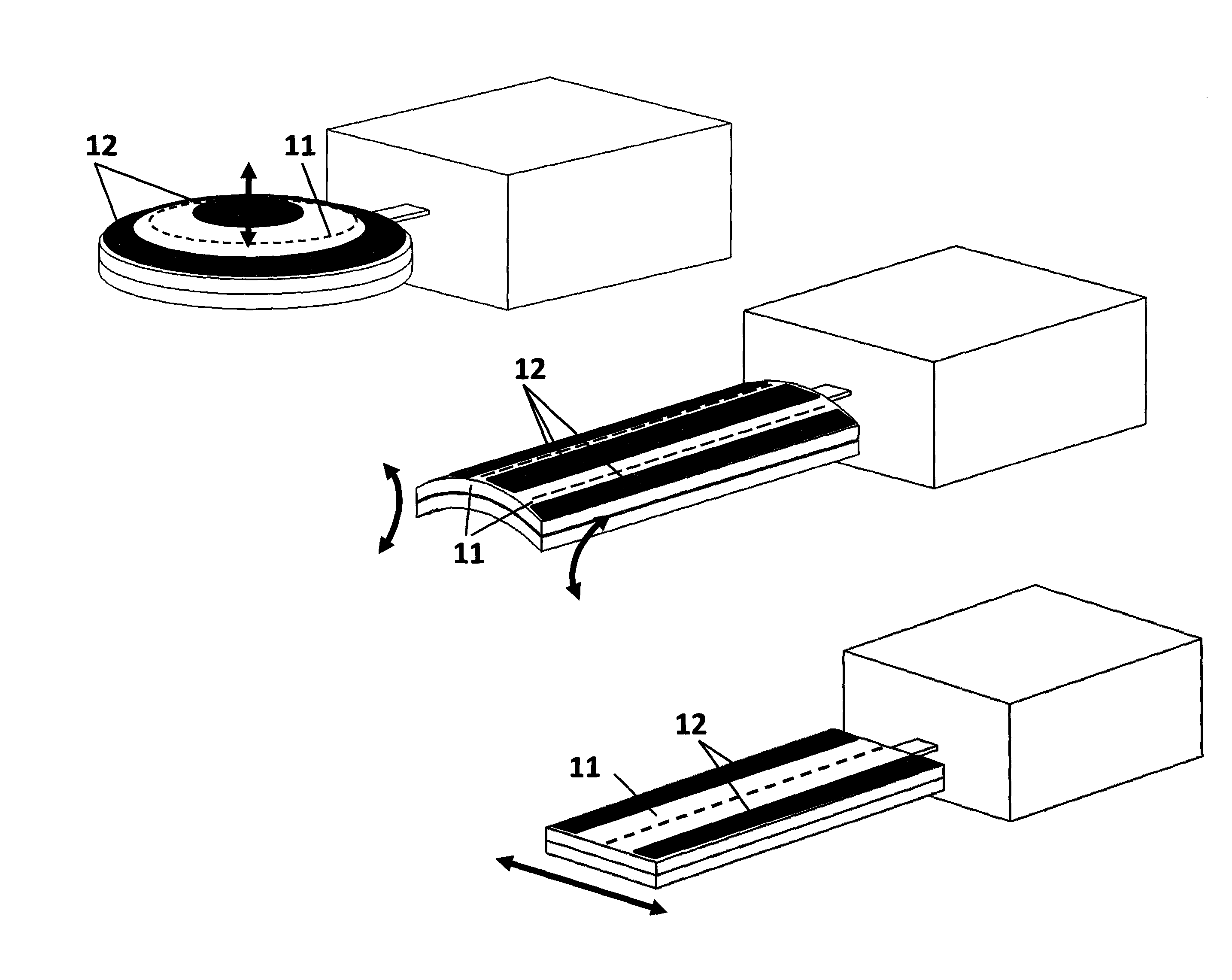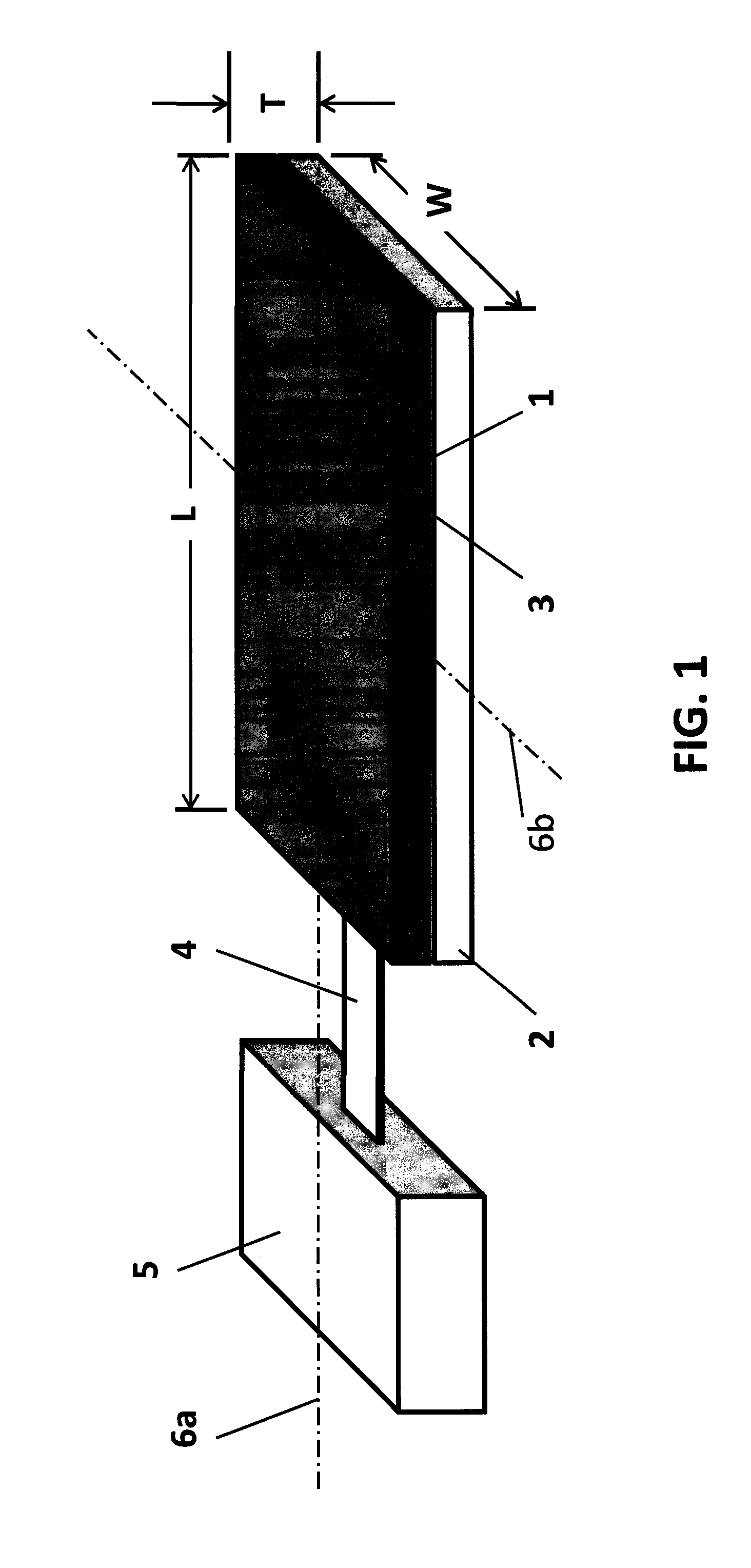Resonant sensors and methods of use thereof for the determination of analytes
a technology of resonance sensors and analytes, which is applied in the direction of resonant frequency, vibration measurement in solids, instruments, etc., can solve the problems of inability to make analyte determinations, inability to use the base non-piezoelectric layer, and inability to sensitive techniques
- Summary
- Abstract
- Description
- Claims
- Application Information
AI Technical Summary
Benefits of technology
Problems solved by technology
Method used
Image
Examples
example 1
[0066]Sensors were fabricated using 125 um PZT and 125 alumina. The materials were wafer bonded using epoxy or solder and subsequently diced to singulate individual sensor assemblies creating sensors with coextensive symmetry and asymmetry. The dimensions evaluated ranged from 0.75 to 1.25 mm wide and up to 6 mm long. Electrode wires were soldered and fixed with conductive epoxy. Sensors were fabricated “floating” and anchored in epoxy. The resonant frequency, associated spectrum and signal quality (Q) were examined using an impedance analyzer. The sensor variations built verified behavior expected from finite element modeling.
example 2
[0067]Devices were fabricated ranging from 1.5×1 mm to 2.0×1 mm in which the active and passive planar members were coextensive, having equal length and width. Two different methods were successfully used to fabricate these devices. In one method, a 1.5×1 mm PZT layer having a thickness of 125 μm, which served as the active member, was joined to a passive, alumina layer having the same dimensions. The alumina layer was metalized and soldered to the PZT layer. The alumina layer had a solder filled via which allowed for electrodes to be attached to either side of the assembly. The electrodes were metal strips and were attached with conductive epoxy. The structure of the resulting device corresponds generally to that illustrated in FIG. 1. This device produced the spectrum shown in FIG. 9. An alternate assembly method was also successfully used, substituting glass for alumina as the passive member, which was attached to the PZT layer by means of epoxy. A metal strip electrode was attac...
PUM
 Login to View More
Login to View More Abstract
Description
Claims
Application Information
 Login to View More
Login to View More - R&D
- Intellectual Property
- Life Sciences
- Materials
- Tech Scout
- Unparalleled Data Quality
- Higher Quality Content
- 60% Fewer Hallucinations
Browse by: Latest US Patents, China's latest patents, Technical Efficacy Thesaurus, Application Domain, Technology Topic, Popular Technical Reports.
© 2025 PatSnap. All rights reserved.Legal|Privacy policy|Modern Slavery Act Transparency Statement|Sitemap|About US| Contact US: help@patsnap.com



